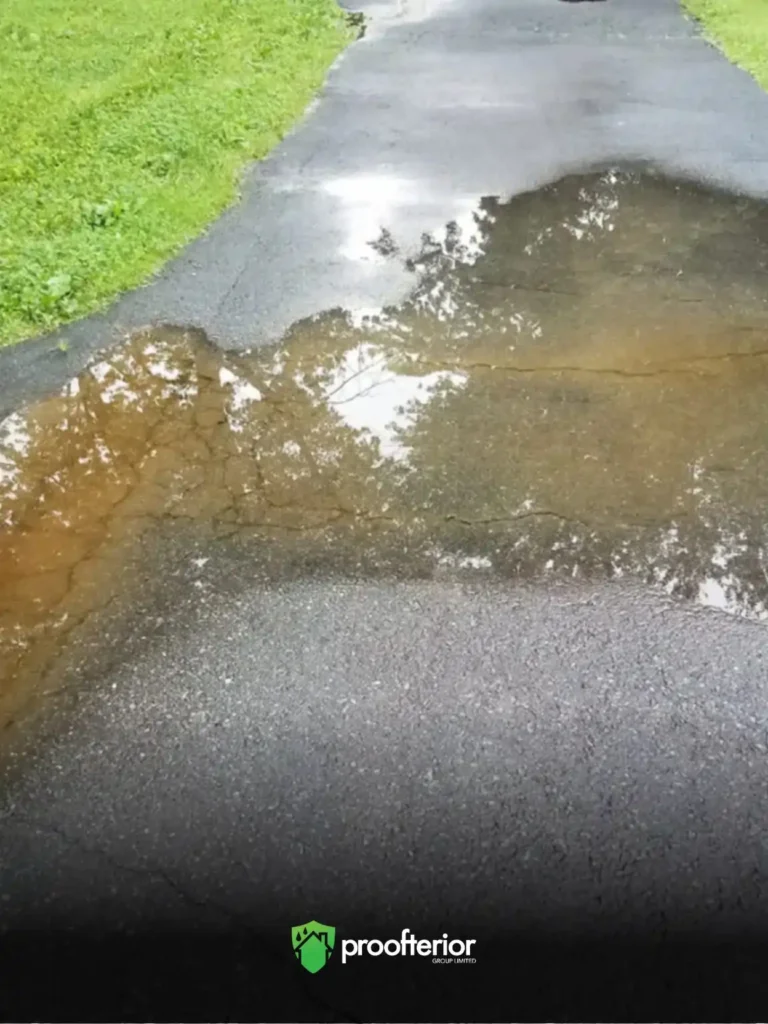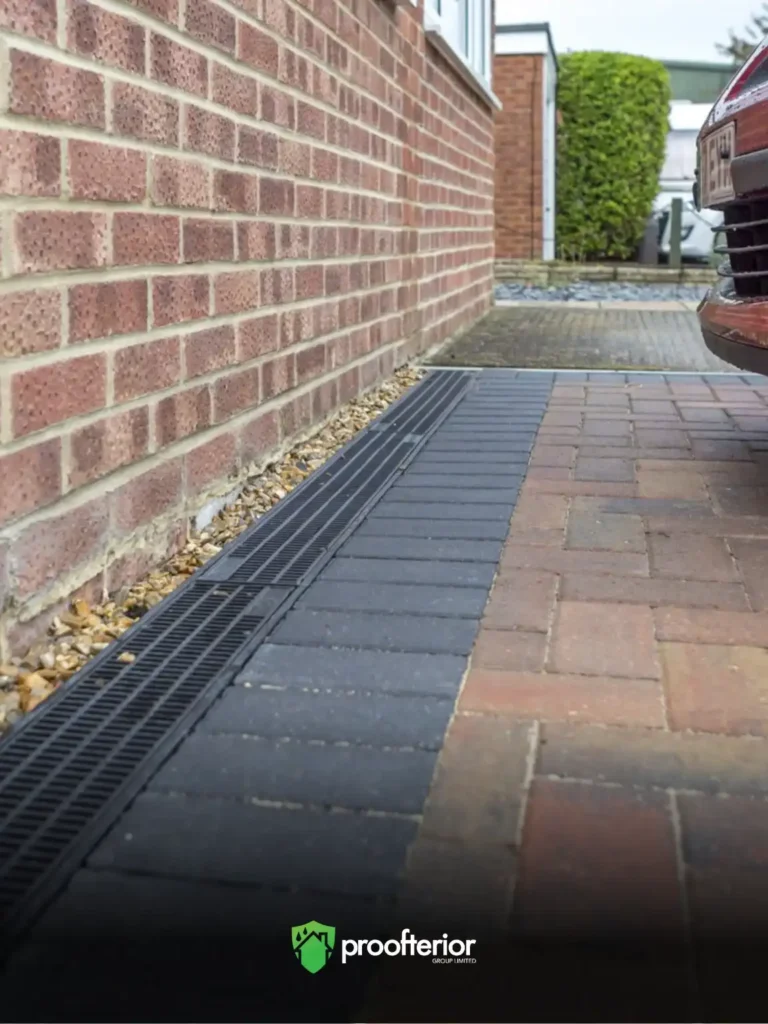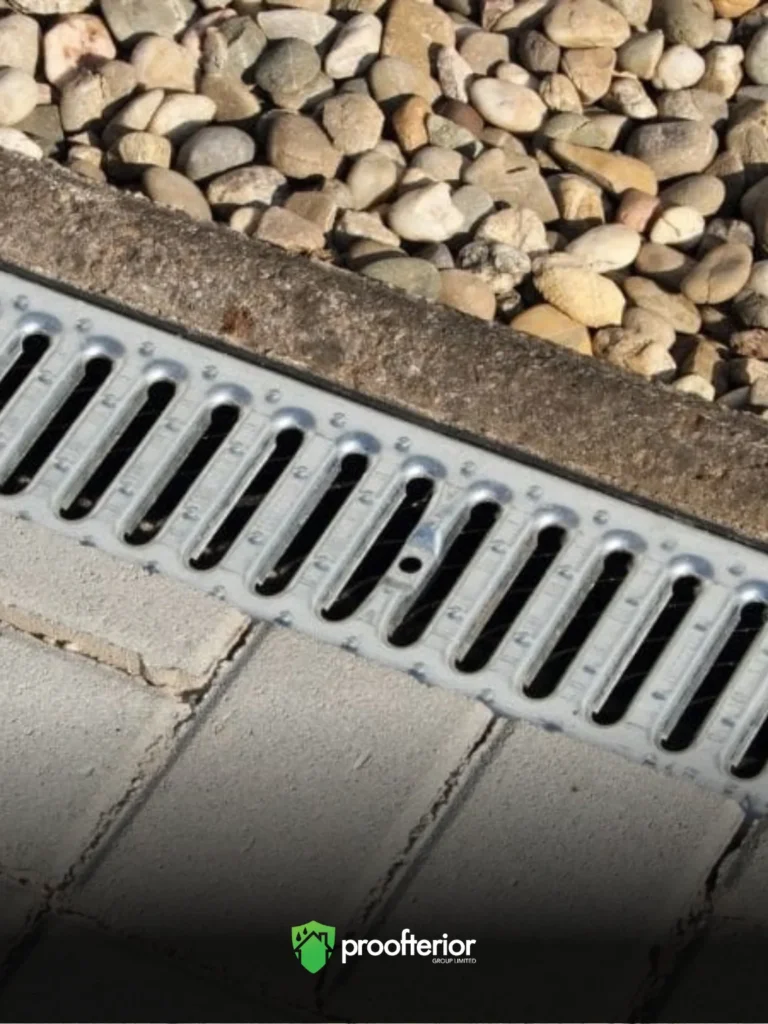Channel Drainage for Driveways & Patios in Dorset & Hampshire: Costs, Regulations & Installation
Heavy rain shouldn’t mean puddles at your door. Channel drainage—also called linear or ACO drainage—moves surface water off your driveway, patio, or garage threshold quickly and safely, protecting your home and paving from damage. Below, we cover how it works, UK rules, costs, and when to call Proofterior (your one-call-away contractor for survey, installation, and aftercare across Dorset and Hampshire).

What is channel drainage, when you need it & the UK rules (at a glance)
What it is: Channel drainage also called linear or ACO drainage—is a slim trench with a grating that captures surface water and carries it to a lawful outlet (usually a soakaway).
When you need it: If water is pooling on your driveway, patio, garage threshold, or beside retaining walls, a channel drain stops ingress and protects paving and foundations.
Planning basics: For front driveways, you usually don’t need planning permission if the surface is permeable or runoff drains to a permeable area within your plot. If you add over 5 m² of impermeable surfacing that doesn’t drain to a permeable area, permission is typically required.
Outfall hierarchy (Part H): 1) Soakaway/infiltration where practicable → 2) Watercourse (may need consent) → 3) Sewer only if the others aren’t practicable.
Good practice: Set falls away from the house (aim around 1:60 on impervious surfaces) so water naturally heads for the channel.

Design & installation — Pick the right system and do it properly
Choose the right load class (BS EN 1433):
A15 for patios/paths (pedestrian).
B125 for most domestic driveways (cars).
C250/D400 near roads or for heavier traffic.
Using too light a class risks cracking under wheels.
Where to place channels (high-impact spots):
Across garage/door thresholds on sloped drives.
Along patio edges that fall toward the house.
Beside retaining walls where water concentrates.
How we install (Proofterior method):
Survey & levels — confirm falls and a lawful outfall that meets Part H.
Trench & base — excavate and set channels on a stable bed to manufacturer spec.
Set & connect — maintain a consistent invert; connect to a soakaway/filter drain or compliant system.
Grate & finish — set ~5 mm below the finished surface; reinstate block/resin/slab neatly.
Test & brief — water test, fit silt control (catchpit/gully), handover maintenance tips.
DIY or pro? Short pedestrian runs can be DIY. For driveways, new soakaways, depth, or tricky reinstatement, use a specialist to stay compliant and avoid flooding or enforcement issues.

Costs, upkeep & why Proofterior is your one-call-away contractor
Costs & timelines: Domestic channel drainage is priced per linear metre. Final price depends on run length, load class, paving reinstatement (block, resin, slab, concrete), access, depth, and whether a new soakaway is required. We provide a fixed, written quote after a quick survey and schedule works promptly across Dorset & Hampshire (Bournemouth, Poole, Southampton, Portsmouth, Winchester).
Maintenance (keep it flowing):
Seasonal clean: lift grates, remove leaves/silt.
Silt control: add catchpits/gully pots on longer runs.
Outfall check: keep soakaway inlets clear; never discharge to foul-only sewers.
Why Proofterior:
Compliance-first: designed to Part H with lawful outfalls and correct load classes.
End-to-end: survey, design, installation, reinstatement, and aftercare by one team.
Local & responsive: quick surveys and tidy installs across Dorset & Hampshire.
FREQUENTLY ASKED QUESTIONS
What is a channel drain and when should I use one?
A channel (linear/ACO) drain is a slim trench with a grating that collects surface water and guides it to a lawful outfall (typically a soakaway). Use it where water pools on driveways, patios, garage thresholds, or along retaining walls.
Do I need planning permission for a new driveway with a channel drain?
If your front driveway is permeable or you route runoff to a permeable area within your plot, you usually don’t need planning permission. If you add over 5 m² of impermeable surfacing that doesn’t drain to a permeable area, permission is generally required in England.
Can I connect a channel drain to a foul-only sewer?
Generally no. Building Regulations promote separate systems for foul and surface water; surface water should not discharge to a foul-only sewer.
What maintenance does a channel drain need?
Lift grates seasonally to remove leaves/silt. On longer runs, include catchpits/gully pots to trap grit before the outfall.
Are “ACO drains” different from channel drains?
“ACO” is a leading brand; in everyday speech people sometimes use it to mean any linear/channel drain. The important part is selecting the correct load class and lawful outfall.
How long does installation take and what does it cost?
Small domestic runs are often completed in a day; costs vary by length, load class, reinstatement (block, resin, slab, concrete), access, and whether a new soakaway is required. We survey and provide a fixed, written quote for Dorset & Hampshire homes.
Ready to stop standing water for good?
Book a survey today. We’re one call away and can prioritise call-outs after heavy rain.
